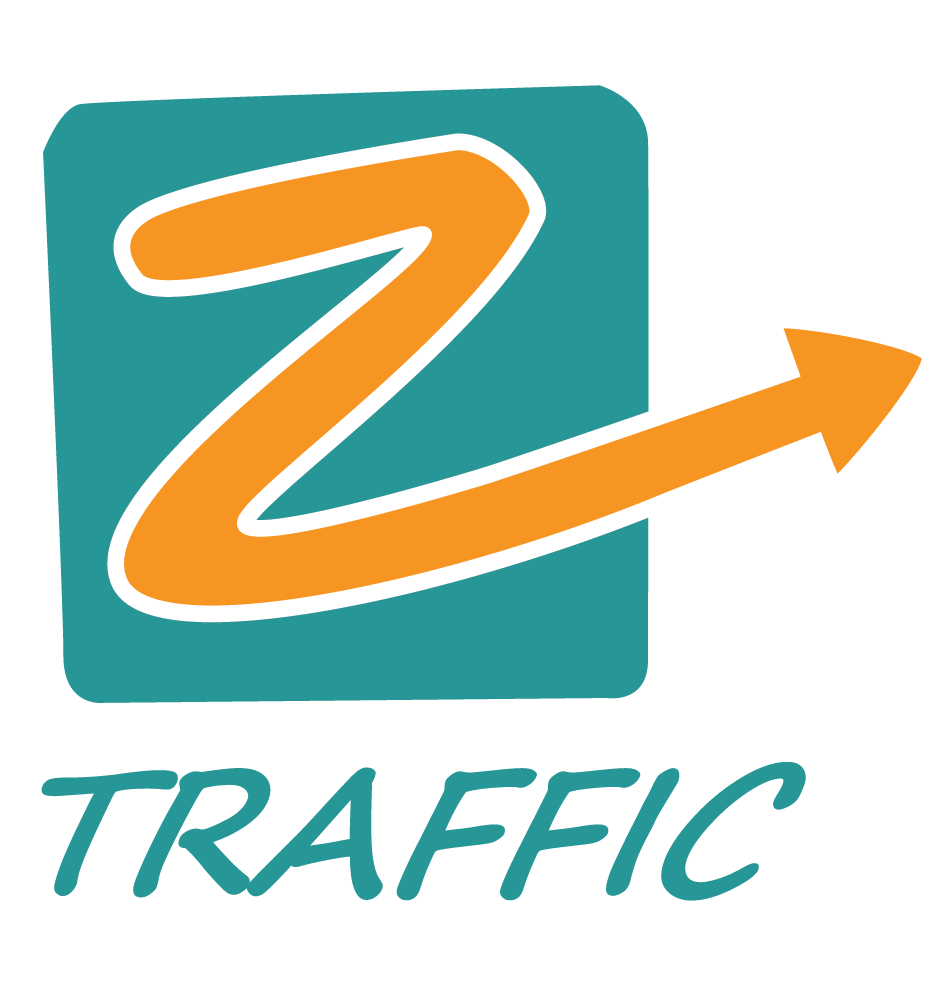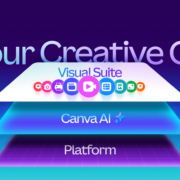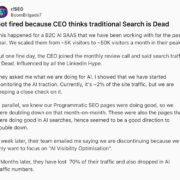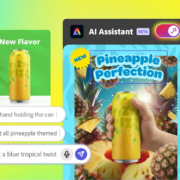Written by
Knoxville, Tennessee / Syndication Cloud / October 27, 2025 / MediaExpress

Key Takeaways:
The accounting industry’s competitive landscape has shifted dramatically. While large firms pour substantial resources into marketing campaigns, small accounting practices often feel overwhelmed by the challenge of competing for visibility and clients. However, the path to success doesn’t require matching their marketing budgets dollar for dollar.
Research reveals that high-growth accounting firms allocate approximately 2.1% of their revenue to marketing, excluding compensation costs. This represents double the 1% investment made by slower-growing firms. These high-growth practices achieve revenue growth rates up to seven times faster than their competitors, demonstrating the clear correlation between marketing investment and business expansion.
The disparity becomes even more pronounced when examining total marketing budgets. While large accounting firms can dedicate hundreds of thousands of dollars annually to advertising, branding, and lead generation, small firms typically operate with fraction of these resources. Many business advisors suggest that smaller accounting firms should allocate at least 5% of their revenue to marketing and sales to see meaningful growth, but the key lies in strategic deployment rather than raw spending power.
For small firm owners wondering how to bridge this gap, the solution isn’t about increasing spending to match larger competitors. Instead, it’s about using cost-effective strategies that deliver maximum impact.
A well-constructed website serves as the most cost-effective accounting marketing tool for lead generation and branding. Unlike expensive advertising campaigns that require ongoing investment, a professional website works around the clock to attract and convert potential clients. Modern websites equipped with contact forms, service descriptions, and client testimonials can generate leads while showcasing expertise and credibility.
The website should function as more than just an online brochure. Interactive features like tax calculators, downloadable guides, and appointment scheduling systems provide immediate value to visitors while capturing contact information for follow-up. Search engine optimization ensures the site appears when local businesses and individuals search for accounting services, creating a steady stream of qualified leads without ongoing advertising costs.
“Content marketing typically costs significantly less than traditional marketing while generating substantially more leads on average,” say the experts from MediaExpress, a marketing agency specializing in accounting firm visibility and traffic growth. “For accounting firms, this strategy involves creating valuable resources that address common client questions and concerns. Blog posts explaining tax law changes, video tutorials on bookkeeping basics, and downloadable checklists for small business owners establish expertise while attracting potential clients.”
The compound effect of content marketing provides long-term benefits that traditional advertising cannot match. Each piece of quality content continues attracting visitors and generating leads long after publication. Additionally, most marketers report increased brand awareness through content marketing efforts, making it a vital component of any competitive marketing strategy.
Local SEO optimization helps accounting firms dominate search results when potential clients search for services in their area. This strategy proves particularly effective for small firms competing against larger practices, as local search results often favor businesses with strong community connections and relevant local content.
Optimizing Google My Business listings, gathering client reviews, and creating location-specific content ensures visibility when prospects search for “accountant near me” or “[city] tax preparation services.” Local SEO requires minimal financial investment but demands consistent effort in maintaining accurate business information across online directories and engaging with customer reviews.
Email marketing provides a cost-effective method for boosting brand awareness and nurturing client relationships. Regular newsletters sharing tax tips, deadline reminders, and industry updates keep the firm top-of-mind throughout the year, not just during tax season. Segmented email campaigns allow personalized communication based on client types, such as small businesses versus individual taxpayers.
The direct communication channel that email provides proves invaluable for maintaining relationships with existing clients while nurturing prospects through the decision-making process. Automated email sequences can guide potential clients through educational content, gradually building trust and positioning the firm as the logical choice when they’re ready to engage professional services.
Small accounting firms often possess inherent agility advantages that large corporations cannot replicate, regardless of their marketing budgets. When new marketing trends emerge or market conditions shift, small firms can pivot immediately without navigating corporate bureaucracy, committee approvals, or lengthy decision-making processes that plague larger organizations.
This responsiveness allows small firms to test innovative marketing approaches, quickly abandon unsuccessful strategies, and double down on effective tactics. While large firms spend months analyzing and approving new marketing initiatives, small firms can implement, test, and refine their approach in real time based on actual results rather than theoretical projections.
The personal touch that small accounting firms provide creates competitive advantages that no marketing budget can purchase. Clients appreciate direct access to their accountant, personalized attention to their unique situations, and the flexibility to customize services based on individual needs. These relationship-based benefits generate powerful word-of-mouth marketing that often outperforms expensive advertising campaigns.
Customer service excellence becomes a significant differentiator when competing against larger firms with standardized processes and limited personalization. Small firms can remember client preferences, maintain ongoing relationships throughout the year, and provide the individual attention that builds lasting loyalty and generates referrals.
The collaborative, intimate work environment that small firms naturally foster creates both employee satisfaction and client benefits. Staff members can develop deeper expertise in specific areas and maintain closer relationships with clients, leading to better service quality and more personalized solutions.
This close-knit structure enables faster problem-solving, more creative solutions, and the ability to go above and beyond for clients in ways that corporate policies might prohibit at larger firms. The resulting client satisfaction and staff dedication create marketing advantages that extend far beyond paid advertising efforts.
Developing expertise in specific industries allows small accounting firms to differentiate themselves from general practice competitors while commanding premium rates. Rather than competing on price with large firms offering commoditized services, niche specialists become the go-to experts for particular business types or specialized accounting needs.
Industry specialization enables faster growth through focused marketing efforts and referral networks within specific business communities. Restaurants, medical practices, construction companies, and e-commerce businesses each have unique accounting needs that generalist firms often handle less effectively than specialists who understand industry-specific challenges and opportunities.
Firms that develop accounting niches grow at faster rates and effectively avoid price competition by positioning themselves as specialists rather than generalists. This expert positioning allows premium pricing while reducing competition, as clients prefer working with accountants who understand their specific industry challenges.
Niche expertise also creates natural marketing opportunities through industry associations, trade publications, and specialized networking events where the firm can establish thought leadership and generate high-quality referrals from within their target market.
Community involvement provides marketing benefits that extend far beyond traditional advertising reach. Sponsoring local business events, charity fundraisers, and community organizations builds brand recognition while demonstrating commitment to the local area. These activities generate positive associations and word-of-mouth recommendations that money cannot buy.
Volunteering for community causes creates networking opportunities with other local business owners and community leaders, often leading to referrals and business relationships. The goodwill generated through community involvement translates into marketing credibility that strengthens all other promotional efforts.
Small firms can implement creative local promotions and personalized offers that large corporate practices cannot easily replicate. Special rates for local business associations, referral incentives for existing clients, and community-specific services demonstrate flexibility and local commitment that resonates with area businesses and residents.
These localized approaches create competitive advantages by addressing specific community needs and building stronger connections with the local market. Large firms with standardized pricing and service offerings struggle to match this level of customization and local relevance.
Small accounting firms can compete effectively with larger competitors by strategically investing approximately 5% of revenue in marketing while focusing on high-impact, low-cost strategies. The key lies in consistent implementation rather than sporadic large investments, building marketing momentum through sustained effort across multiple channels.
Success comes from combining digital strategies like professional websites and content marketing with relationship-based approaches like community involvement and exceptional customer service. This integrated approach maximizes marketing effectiveness while playing to the natural strengths that small firms possess.
The most successful small accounting firms don’t try to outspend their larger competitors; they out-strategize them by using advantages that money cannot buy while implementing cost-effective digital and content marketing tactics that level the playing field. Consistent execution of these strategies creates sustainable competitive advantages that grow stronger over time.
MediaExpress
info@mediaexpress.ai
+1 305 923 2445
9111 Cross Park Dr.
D200
Knoxville
Tennessee
37923
United States
Information contained on this page is provided by an independent third-party content provider. XPRMedia and this Site make no warranties or representations in connection therewith. If you are affiliated with this page and would like it removed please contact pressreleases@xpr.media
Windsor, WI October 27, 2025 –(PR.com)– Alliant Power, a leading aftermarket distributor of diesel critical engine parts, today announced a landmark partnership with Schaeffler, the…
October 30, 2025
Houston, TX October 28, 2025 –(PR.com)– Lumber Liquidators, the nation’s leading specialty retailer of hardwood flooring, today announced the relocation of its Houston store to…
October 30, 2025
Springfield, MO October 27, 2025 –(PR.com)– The Resource Center Insurance Services, a distinguished independent insurance agency based in Missouri, is pleased to announce its new…
October 30, 2025
Bowling Green, KY October 28, 2025 –(PR.com)– Cabinets To Go is excited to announce the opening of its new Bowling Green showroom at 1435 Campbell…
October 30, 2025
Oct. 23, 2025 / PRZen / ATLANTA — The Tree That Could Not Change is a children’s story that asks a simple question: what if…
October 29, 2025
Brecksville, Ohio – October 28, 2025 – PRESSADVANTAGE – Elite Cleveland Handyman, a locally owned home repair and improvement company, has expanded its comprehensive service…
October 29, 2025
BOCA RATON, FL / ACCESS Newswire / October 27, 2025 / Newsmax Inc. (NYSE:NMAX) (“Newsmax” or the “Company”) today announced a new agreement with the…
October 29, 2025
NEW YORK CITY, NY / ACCESS Newswire / October 27, 2025 / Casehero, a startup focused on AI-driven technology, announces the launch of the minimum…
October 29, 2025
VANCOUVER, BC / ACCESS Newswire / October 24, 2025 / SafeKeep Data Recovery, Vancouver’s trusted walk-in data recovery lab, has won 2025 Consumer Choice Award…
October 29, 2025
McDonough, Georgia – October 23, 2025 – PRESSADVANTAGE – Arrowhead Clinic Chiropractor McDonough has released comprehensive educational resources addressing a critical health concern affecting thousands…
October 29, 2025
RAPPERSWIL-JONA, CH – October 28, 2025 – PRESSADVANTAGE – egli jona ag, a premier landscaping company serving the Lake Zurich region for over seven decades,…
October 29, 2025
Gorlin Syndrome, also known as Nevoid Basal Cell Carcinoma Syndrome, is a rare inherited genetic disorder affecting 1 in 31,000 people worldwide that can develop…
October 29, 2025
New York, NY October 28, 2025 –(PR.com)– J. John Bral, Esq. of Derek Smith Law Group, PLLC announced today that he has filed a lawsuit…
October 29, 2025
Sacramento, California – October 23, 2025 – PRESSADVANTAGE – Golden Goose Marketing, a Sacramento-based digital marketing agency, is spotlighting how the construction industry is adapting…
October 29, 2025
CARRUM DOWNS, VIC – October 23, 2025 – PRESSADVANTAGE – Fix-It Right Plumbing, Australia’s most trusted professional plumbing company, proudly announces that its team has…
October 29, 2025
October 22, 2025 – PRESSADVANTAGE – Hydro Heroes, a Southwest Washington disaster cleanup and restoration company, has released comprehensive guidance on protecting residential foundations from…
October 29, 2025
HONG KONG, HK – September 24, 2025 – PRESSADVANTAGE – Ginza Diamond Shiraishi Hong Kong issues a practical guide for couples and individuals navigating the…
October 29, 2025
GARLAND, TX – October 23, 2025 – PRESSADVANTAGE – Keathley Landscaping, a Dallas-based landscape design and installation company, has introduced expanded custom stonework services to…
October 29, 2025
BETTENDORF, IA – September 19, 2025 – PRESSADVANTAGE – Sara DeWulf REALTOR, a second-generation real estate professional serving the Quad Cities area, announces the expansion…
October 29, 2025
LEWISVILLE, TX – September 19, 2025 – PRESSADVANTAGE – Lone Wolf Exteriors, an exterior renovation company, has announced the expansion of its residential and commercial…
October 29, 2025
Las Vegas, NV – September 18, 2025 – PRESSADVANTAGE – Press Advantage, a leading press release distribution service, today announced the launch of a comprehensive…
October 29, 2025
September 17, 2025 – PRESSADVANTAGE – Hyperlocal Directory, a renowned platform for connecting residents with reliable local services, is excited to announce the launch of…
October 29, 2025
KANSAS CITY, MO – September 23, 2025 – PRESSADVANTAGE – Able Appliance Repair, a woman-owned appliance repair service operating in the Kansas City metropolitan area…
October 29, 2025
FARMINGTON HILLS, MI – October 24, 2025 – PRESSADVANTAGE – Aesthetic Plastic Surgery & Laser Center, under the leadership of Michelle Hardaway M.D., reinforces its…
October 29, 2025
CHANTILLY, VA – September 25, 2025 – PRESSADVANTAGE – Kraken Bond, a leading manufacturer of high-performance chemical solutions for the construction and industrial sectors, announces…
October 29, 2025
Richardson, TX – October 22, 2025 – PRESSADVANTAGE – Go Industries Inc, a Richardson, Texas-based manufacturer of heavy-duty truck accessories, announces the expansion of its…
October 29, 2025
LAS VEGAS, NV – September 22, 2025 – PRESSADVANTAGE – Las Vegas Homes By Leslie – RE/MAX United Realtor has released an updated inventory of…
October 29, 2025
LEWISVILLE, TX – September 22, 2025 – PRESSADVANTAGE – Lone Wolf Exteriors, an exterior home improvement company, has announced the expansion of its window and…
October 29, 2025
LONDON, UK – October 22, 2025 – PRESSADVANTAGE – McKennell Dental Practice announces new consultations for patients considering dentures at its Pimlico, Victoria location. The…
October 29, 2025
MILLBRAE, CA – September 23, 2025 – PRESSADVANTAGE – T.D.E. Wedding, a Bay Area wedding planning and design company, is expanding its specialized services to…
October 29, 2025
LEWISVILLE, TX – September 23, 2025 – PRESSADVANTAGE – Lone Wolf Exteriors, a Dallas-Fort Worth-based exterior renovation specialist, announces expanded service capacity for residential window…
October 29, 2025
MACON, GA – October 24, 2025 – PRESSADVANTAGE – RestoPros of Central Georgia has expanded its service capabilities across the region to provide enhanced emergency…
October 29, 2025
Las Vegas, NV – October 23, 2025 – PRESSADVANTAGE – Press Advantage, a leading press release distribution service, today addressed widespread industry misconceptions about the…
October 29, 2025
October 21, 2025 – PRESSADVANTAGE – Bailey Boys Services, a Sacramento-based cleaning company, is prepared and ready to help homeowners and businesses prepare for the…
October 29, 2025
October 23, 2025 – PRESSADVANTAGE – Mureka, an AI-powered music generation platform, today shared insights on the increasing adoption of AI song generators among content…
October 29, 2025
London Borough of Croydon, England – October 23, 2025 – PRESSADVANTAGE – Smile 4 U Dental Practice – Croydon has announced the availability of consultations…
October 29, 2025
October 24, 2025 – PRESSADVANTAGE – 750ml Wines, a wine bar and restaurant in Akron, has been recognized as the Best Date Night Spot in…
October 29, 2025
LEWISVILLE, TX – September 17, 2025 – PRESSADVANTAGE – Lone Wolf Exteriors, a Texas-based exterior renovation specialist, has announced the expansion of its residential siding…
October 29, 2025
October 22, 2025 – PRESSADVANTAGE – Pavago LLC, a leading offshore recruitment solutions provider, today announced an enhanced support model that addresses the growing demand…
October 29, 2025
Coventry, UK – October 24, 2025 – PRESSADVANTAGE – Strongway Gym Supplies has announced the availability of its latest squat rack and power cage packages,…
October 29, 2025
source










